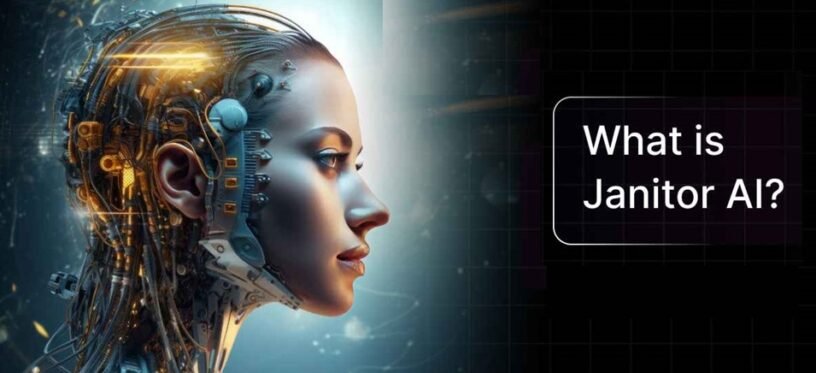Table of Contents
Introduction : Janitor AI
The term “janitor” might conjure up images of mops and buckets, but in the ever-evolving world of technology, AI (Artificial Intelligence) is taking the concept of cleaning to a whole new level. Enter Janitor AI, a multifaceted term encompassing different applications of AI that keep things running smoothly, both in the digital and physical realms.
1. Data Janitors: The Maids of Machine Learning
Imagine a messy room overflowing with unlabeled boxes. This is what raw data can be like for machine learning algorithms. Janitor AI in this context acts as the data cleaning crew. Tools like Janitor.ai (with a dot) specialize in data preprocessing, a crucial step in machine learning. They tackle tasks like:
- Classification: Sorting data into categories, like identifying emails as spam or not.
- Cleaning and Formatting: Fixing inconsistencies, typos, and missing values to ensure data uniformity.
- De-duplication: Eliminating duplicate entries for accurate analysis.
This “data janitorial” work ensures the quality of information fed to machine learning models, leading to more reliable and accurate results.
Real-life Example: A company uses Janitor AI to clean customer data before feeding it into a machine learning model that predicts buying behavior. Clean data helps the model identify patterns and recommend relevant products, boosting sales.
2. Chatbot Janitors: The Virtual Butlers of Conversation
Janitor AI can also refer to AI-powered chatbots that handle customer service inquiries. These chatbots act as virtual janitors, clearing away the need for human intervention in basic interactions. They can:
- Answer Frequently Asked Questions (FAQs): These chatbots provide immediate answers to common queries, freeing up human agents for more complex issues.
- Schedule Appointments: Janitor AI chatbots can streamline appointment booking, allowing customers to self-schedule 24/7, improving efficiency.
- Collect Information: Chatbots can gather basic details from customers, saving time for human agents who can then focus on personalized interactions.
Real-life Example: A bank utilizes a Janitor AI chatbot to answer questions about account balances and direct customers to the appropriate department if needed. This reduces call wait times and improves customer satisfaction.
3. The Future of Janitor AI: From Chat to Clean
While Janitor AI currently focuses on digital cleaning, the future holds promise for its physical manifestation. Imagine robots equipped with AI that can autonomously clean buildings, maintaining hygiene and freeing up human janitors for higher-level tasks.
Real-life Example (in development): Companies are developing robotic vacuum cleaners that use AI to navigate obstacles and clean floors efficiently, mimicking the work of a physical janitor.
Conclusion : Janitor AI: A Clean Sweep for the Future
Janitor AI plays a vital role in ensuring the smooth operation of various systems, both digital and potentially physical in the future. By tackling data cleaning, automating communication, and offering the potential for autonomous cleaning robots, Janitor AI is keeping things clean and efficient in the ever-evolving technological landscape.

Frequently Asked Questions on Janitor AI
You’ve been reading about Janitor AI, and it sounds like you have some questions! Let’s delve deeper into these frequently asked topics:
Is Janitor AI free?
There isn’t a single definitive Janitor AI. The term applies to various AI applications, and their cost depends on the specific tool or service. Some data cleaning tools might be free for personal use, while enterprise-grade solutions likely come with a subscription fee. Similarly, chatbot functionalities can be offered as part of a larger software package or available through a paid API.
Reverse Proxy for Janitor AI?
A reverse proxy is a server-side technology that sits in front of another server and directs incoming traffic. It’s not directly related to Janitor AI functionalities. Janitor AI, on the other hand, focuses on tasks like data cleaning, chatbot interactions, and potentially controlling robots.
Is there an app called Janitor AI?
There might be apps that leverage Janitor AI functionalities for data cleaning or chatbot interactions. However, ‘Janitor AI’ itself is not a singular app but an umbrella term for AI-powered cleaning tasks. For instance, an e-commerce app might utilize Janitor AI features behind the scenes to clean customer data before feeding it into a recommendation engine.
Janitor AI LLM?
LLM stands for Large Language Model, a type of AI adept at processing and understanding large amounts of text data. Janitor AI doesn’t necessarily involve LLMs itself. While some data cleaning tools might leverage large datasets to identify patterns and inconsistencies, Janitor AI encompasses a broader range of functionalities beyond just language processing.
How to use Janitor AI?
The method depends on the type of Janitor AI:
- Janitor.ai (with a dot):
- Create an account (free or paid plan).
- Upload your data.
- Choose cleaning options (classification, formatting, etc.).
- Run the cleaning job to get a clean output.
- Janitor AI Chatbots:
- Access the chat interface (website, app, etc.).
- Ask your questions or follow prompts.
- The chatbot will guide you through the interaction.
Finding Janitor AI Functionalities:
- Janitor.ai Service: Requires account creation and data upload.
- Embedded Chatbots: Part of a website or app, interacted with directly.
- Future Physical Robots: AI-powered cleaning robots might be called Janitor AI someday.




Leave a Reply